Topics
How to Grow Cucumbers: Plus The Crucial Piece You Can't Overlook
CucumbersAhhh cucumbers! Who can deny they are the perfect summer vegetable? They love growing in the hot summer weather.
Cucumbers can be prolific producers and will reliably give you a crop of refreshing, crunchy fruits. They are easy to eat, freshly picked from the vine, or added to drinks, salads, sandwiches, and more. And, of course, the satisfaction of the perfect homemade pickle.

How to Grow Cucumbers
Quick Links
We’ll Cover All the Cucumber Growing Stages
Starting Cucumber Seeds Indoors
About 4 to 6 weeks before it is warm enough to plant cucumbers outdoors, you can start seeds indoors.
In individual cells or containers, use a seed-starting growing medium. Because cucumber roots don’t like to be disturbed, it is best to start seeds in individual containers to make transplanting less traumatic to the tender roots.
Plant the seeds at a depth of 1/2” to 1”. Check the seed packet for specifics on each cucumber variety.
Moisten the seeds with a spray bottle and keep the soil moist but not soggy. You can cover them with a dome to keep the moisture in so that they don’t dry out.
Cucumbers prefer the soil to be warm for germination. The ideal soil temperature for cucumbers is 70º F. The use of heat mats and grow lights can help keep the soil at the perfect temperature.
Depending on the variety, the cucumber seeds should start sprouting between 7 and 14 days.
Once the seeds sprout they will need direct light. The use of grow lights is beneficial to help the tender seedlings get enough sunlight. A sunny window can work as well. You will want to rotate the containers so that the seedlings don’t have to stretch too far to reach the light.
At this point, it is still critical to keep them well-watered. Misting the soil, not the seedling, with a spray bottle is one gentle way to avoid overwatering or damaging the tender plants. Another way is to water from the bottom and allow the soil to absorb the water from below.
Once the seedlings are several inches tall and have true leaves, they are ready to be transplanted. When outdoor temperatures are warm enough, you can start hardening off the plants so they will survive outside.
Remember, cucumbers don’t do well when their root system is disrupted. So take care when starting seeds indoors and then transplanting.
Planting Cucumber Seeds Outdoors
Cucumber seeds can also be directly sown outside once the soil temperature reaches 70º F.
Plant 2 to 3 seeds per hole. Once they are growing, you can choose the strongest plant to keep, cutting back any others so that you have 1 plant per foot.
As with indoor seed starting, you will want to keep the seeds moist. However, when they are outside, a dome can make them too hot in direct sun, so deep watering is best.
With direct sowing, you won’t have to worry about hardening off your cucumber plants, but you will want to protect them from harsh conditions. Cover them if there is any danger of frost.

When to Plant Cucumbers
Cucumbers love warm weather. The best time to plant cucumbers outside is when there is no longer any danger of frost.
Depending on the variety, cucumbers can take 55 to 80 days to grow to maturity. This is usually enough time to have a summer harvest between the last spring frost and the first fall frost. However, if you want to get a jump start on eating cucumbers, you can start seeds indoors 4-6 weeks before it is warm enough to transplant them outdoors.
You can also plant cucumbers throughout the summer as long as you have enough days for them to grow to maturity before the first frost in the fall.
Where to Plant Cucumbers
The best place to plant cucumbers is in a bed full of rich, well-draining soil that gets a full day of sun. In very hot climates, a location with afternoon shade will also work.
Cucumbers also need space. If you allow the vines to spread along the ground, space the plants 18 to 60 inches apart, depending on the variety. Check the seed packet to see the specific spacing recommendations.

Fertilizing Cucumber Plants
Vining plants like cucumbers need a lot of water and nutrients. Cucumber plants grow quickly and will benefit from additional applications of fertilizer throughout the growing season.
The first time to add extra fertilizer is when you transplant indoor seedlings outside. Add extra compost to the soil before planting or transplanting.
When cucumber plants start setting fruit, this is another time to add extra nutrition. They need nitrogen, phosphorus, and potassium. When looking at organic plant foods, the first number will be nitrogen and then phosphorus and potassium, also called NPK numbers. For cucumbers, you will want a lower N number than the PK.
Without enough nutrients, cucumbers will be stunted and misshapen.
You can also test your soil to see that it has the correct pH. The optimal pH for cucumbers is near neutral.

Watering Cucumber Plants
These fast-growing vines need lots of water. Water consistently to keep the soil from drying out completely. Soak the soil and avoid watering from overhead to avoid powdery mildew.
Cucumber plants that don’t get enough water will result in smaller, bitter, and misshapen fruits.
Cucumber Trellising
Cucumbers are a vining plant that can naturally spread out to fill whatever space they can on the ground. However, they can also benefit from growing vertically.
Growing upward instead of out allows you to fit more cumber plants in a smaller space.
Growing cucumbers on trellises also keeps the fruits off the ground and allows for better airflow.
Using a trellis will also make it easier to find those fast-growing cucumbers and harvest them to enjoy before they get too ripe.
If you want the long cucumber varieties to grow into twisty shapes, then let them grow on the ground. If they hang from a trellis, they will be more straight.
Choose a trellis that can handle the weight and size of a fully-grown cucumber vine. You don't want your plants falling over when they are full of produce in the middle of summer!

Companion Plants for Cucumbers
Cucumbers can benefit from having good neighbors. Plant marigolds next to cucumbers to encourage pollinators. Marigolds can also kill root knot nematodes in the soil.
Sunflowers will also attract pollinators and give cucumbers something to climb if you plant tall sunflowers.
Dill and lettuce grow well next to cucumbers. Pole beans are another good companion plant for cucumbers since beans increase the nitrogen in the soil.
It is recommended that you don’t plant cucumbers next to melons since they have similar bug problems and diseases.

Harvesting Cucumbers
Harvesting cucumbers is the best part of growing them in your home garden. Bigger is not better with cucumbers. They develop seeds, and get pithy when they get too big.
The best tasting cucumbers are picked when they are still young enough that the seeds haven’t fully developed.
Harvest cucumbers in the morning before it heats up and pick often. Cucumbers can grow fast in the summer, and they’ll surprise you with their growth seemingly overnight. So check your garden daily to make sure cucumbers don’t go past their prime.
Snip cucumbers off the vine rather than pulling, to avoid damaging the plant.
If cucumbers are allowed to go to seed, it signals to the plant to shut down production.
However, if they do get bigger and develop seeds that you don’t want to eat, scoop out the seeds and cut up the rest of the cucumber to use in salads and drinks.

Pruning Cucumbers
Do cucumbers need to be pruned? There are some theories that pruning will provide better airflow and increase production.
However, in the outdoor garden with adequate space, pruning is not necessary.
Cucumbers have one main vine. From this vine, there will grow leaves, tendrils, flowers, and a sucker. The tendril will wrap around anything it can find to hold on to. This is why cucumbers grow well on trellises. The sucker is a growth point that will eventually produce another stem with tendrils, leaves, and flowers.
So do you need to cut off the suckers? You can cut off the suckers if you want to keep the cucumber vine to one main growing vine. But if you leave the suckers, you will have a larger plant that will continue to produce cucumbers.
If you are growing cucumber plants on the ground and letting them spread, there’s even less reason to cut them off.
Pruning cucumbers is more a matter of space and preference than a necessity.
Common Cucumber Pests and Diseases
Cucumber plants can suffer from some common pests and diseases.
Pests such as cucumber beetles, aphids, spider mites, and squash bugs will eat their way through a cucumber vine. One way to combat them is to use a floating row cover. This is a flexible mesh that can prevent bugs from landing on the plants and laying their eggs. Remove the cover when the female flowers are out so the bees can pollinate them.
Check leaves often and remove any eggs. Use natural methods to get rid of aphids.
Powdery mildew can affect cucumber plants. Getting rid of weeds, keeping vines off the ground, and having good air flow can help prevent powdery mildew.

Our Crucial Cucumber Tip!
It's exciting when the plant first starts producing flowers! And we start counting our pickles before they mature.
However, there won't be any cucumbers if the flowers don't get pollinated.
Understanding how flowers produce fruit is a crucial part of successfully growing cucumbers. Cucumbers have separate male and female flowers. The male flowers will grow first on a plant, and they will fall off without producing cucumbers. It is the female flowers that will develop cucumbers. You can tell which are the female flowers because they have a small cucumber behind them.
When you start seeing these flowers on your cucumber plants, it's time to be aware of bees. Why bees?
Bees are going to do the job of pollinating your cucumber plants. If there aren't enough bees gathering and distributing pollen, the cucumbers won't develop.
So take note of your growing environment to make sure you are creating a space where beneficial pollinators are welcome.
Companion planting and limiting the use of pesticides can significantly increase your cucumber production.
Eating Cucumbers
Our favorite way to eat cucumbers is fresh from the garden! Cut off a crisp, ripe cucumber while you wander through the garden checking on your plants. You can also put cucumbers in the fridge for a little while to chill them and make them even more refreshing.
Without added waxes or pesticide residues, you don’t need to peel them, which preserves their flavor and nutrient value.
However, the crisp, fresh taste of cucumbers won’t last forever. Once picked, cucumbers will last for about a week in the fridge.
Pickling cucumbers is the most common way to preserve them.
To make quick, refrigerator pickles, slice cucumbers and add them to a bowl of apple cider vinegar diluted with water. Add salt and pepper to taste. You can also add some freshly sliced onion.
Cucumbers also pair well with cheese. Add them to a cheese and cracker plate. Feta cheese goes well with the Armenian varieties.
Sliced cucumbers can also be served with hummus and fresh herbs like chives or basil.
FAQs About Growing Cucumbers
How many cucumber seeds per hole?
Plant 2 to 3 cucumber seeds per hole. Once they have several true leaves, you can cut 1 or 2 back and just keep the strongest plant.

Why do you plant cucumbers in mounds?
Planting cucumber seeds on a hill helps keep water away from the base of the plant and allows the ground to be warmer for planting. However, planting in a raised bed that drains well or when trellising vines, you don’t have to plant in mounds.
Why are the flowers falling off and no cucumbers growing?
If the fruits are falling off, then the cucumbers may not be getting pollinated. Flowers such as marigolds and sunflowers encourage pollinators and increase the bee population for pollinating cucumber flowers.
Sometimes you have a rainy season when the cucumbers are flowering. This can prevent the pollinators from getting out and collecting pollen. If this happens, you will need to replicate Mother Nature and hand pollinate with a paintbrush.
Also, if it gets too hot, the cucumber pollen will die. When this happens, you can try to shade the plants to create a slightly cooler environment. Or just keep watering and wait for temperatures to go back down.
What makes cucumbers bitter?
A compound in cucumber plants called cucurbitacin is in the stems, roots, and leaves. This compound is what tastes bitter.
The theory is that when the weather turns hot and dry, the plant gets stressed, and cucurbitacin spreads into the fruit. Usually, the most bitter part will be at the stem end. Cutting it off can remove the bitterness. Also, some cucumbers have a higher level of cucurbitacin and are naturally more bitter than others.
To keep your cucumbers from becoming bitter, keep up regular watering when the weather is hot and dry.
What makes cucumbers misshapen?
Cucumbers that are stunted or misshapen could be a result of incomplete pollination. If the female flower didn’t receive enough pollination then it won’t grow in a regular shape. And if it got too hot, the pollen could have died before it fertilized the flower.
Cucumber beetles can be another culprit of misshapen cucumbers. The beetles will eat parts of the female flower so it doesn’t pollinate completely. Inconsistent watering can also result in misshapen cucumbers.
At Sow Right Seeds, we love helping gardeners be successful. We hope this growing guide has answered your cucumber questions and helped you learn how to grow cucumbers.
It’s time to get growing so you can enjoy the unparalleled taste of homegrown cucumbers.
Found this information helpful? Share it with a gardening friend!





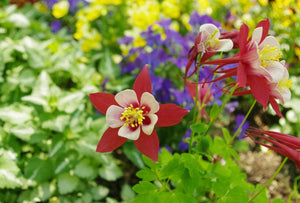
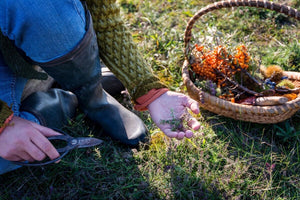
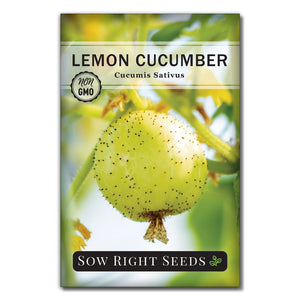
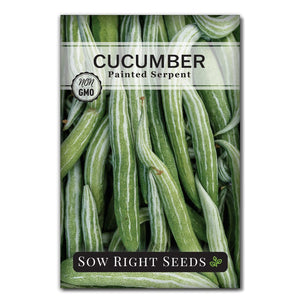
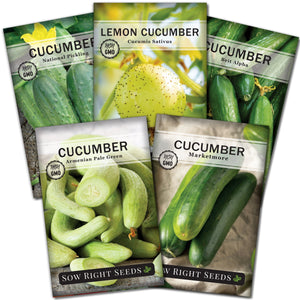
Leave a comment